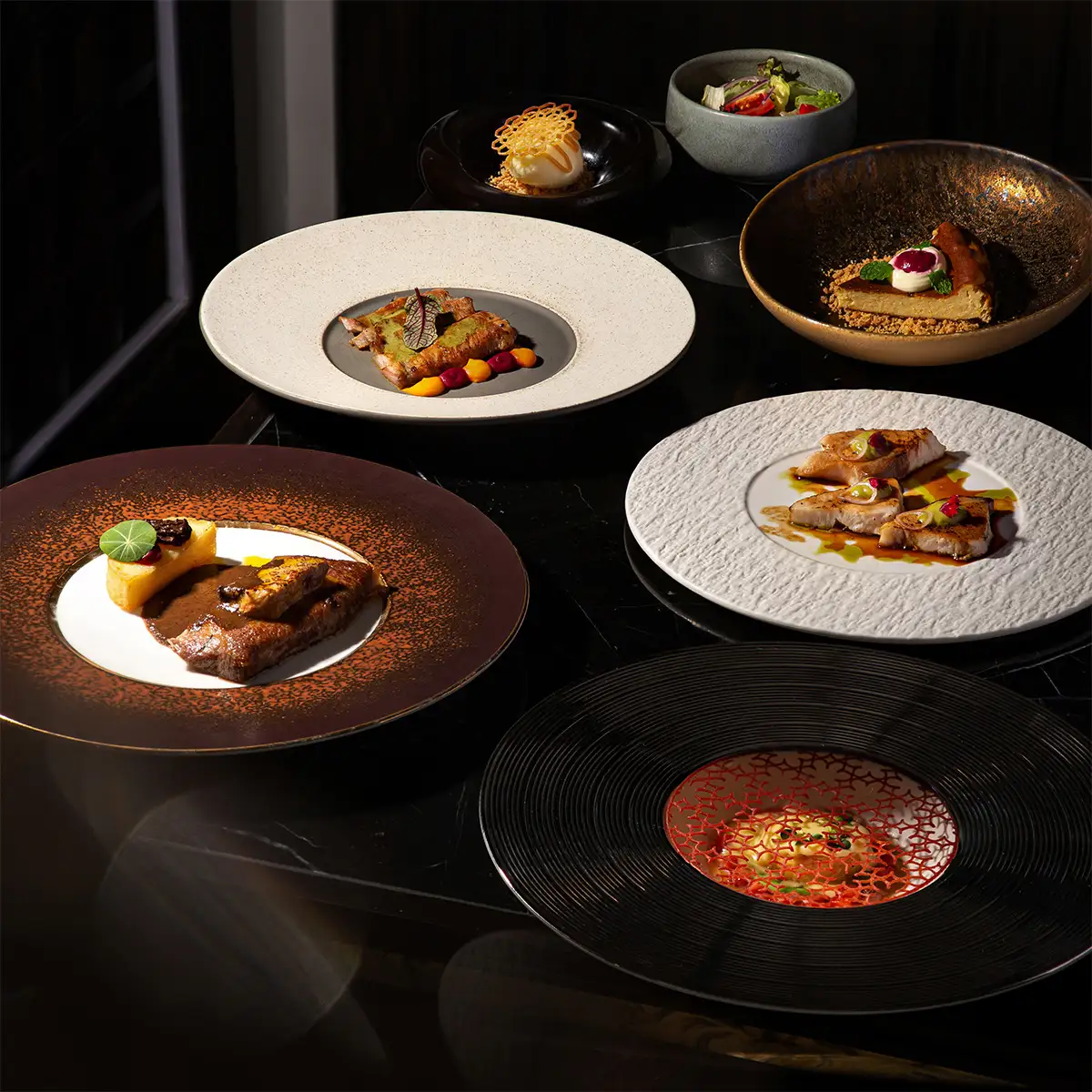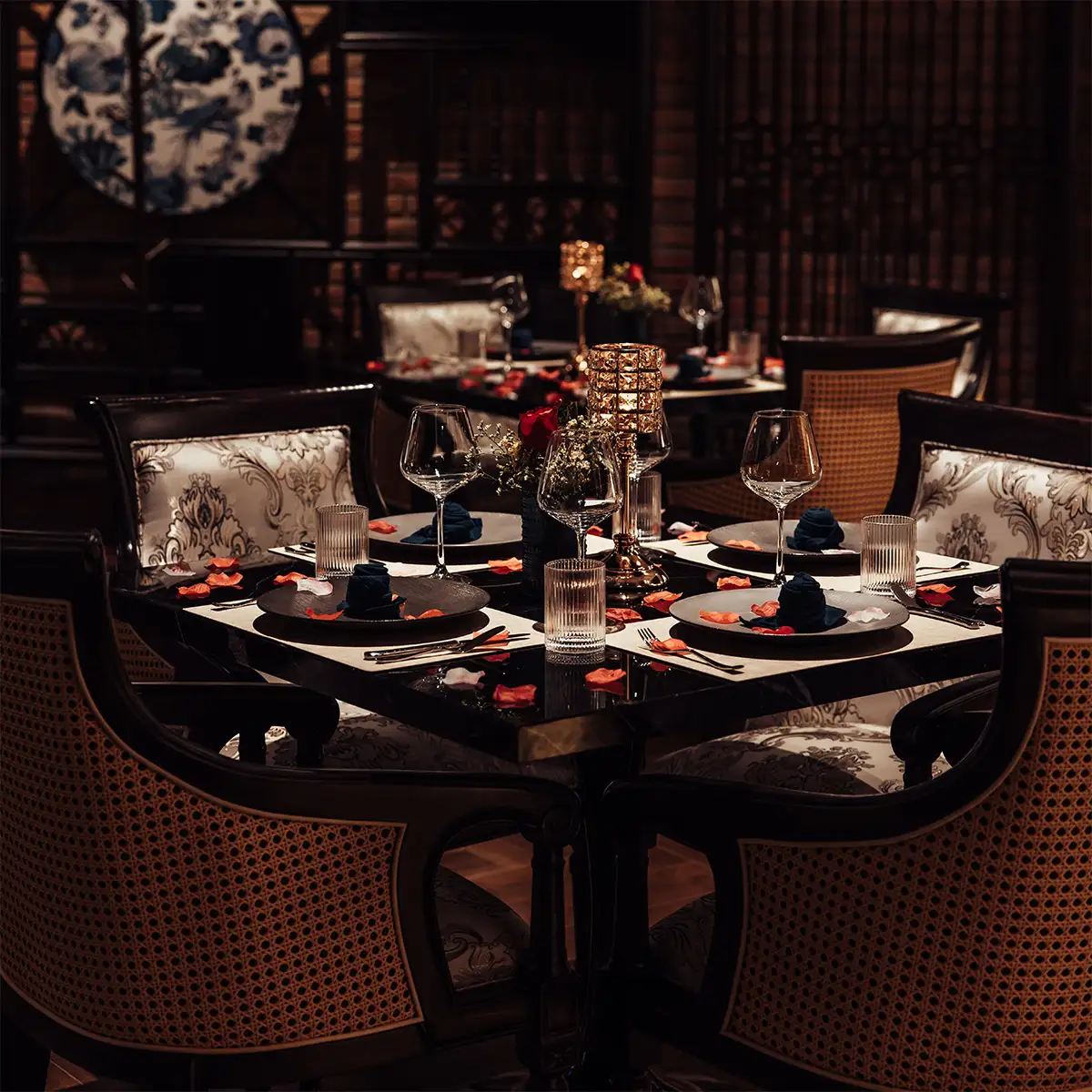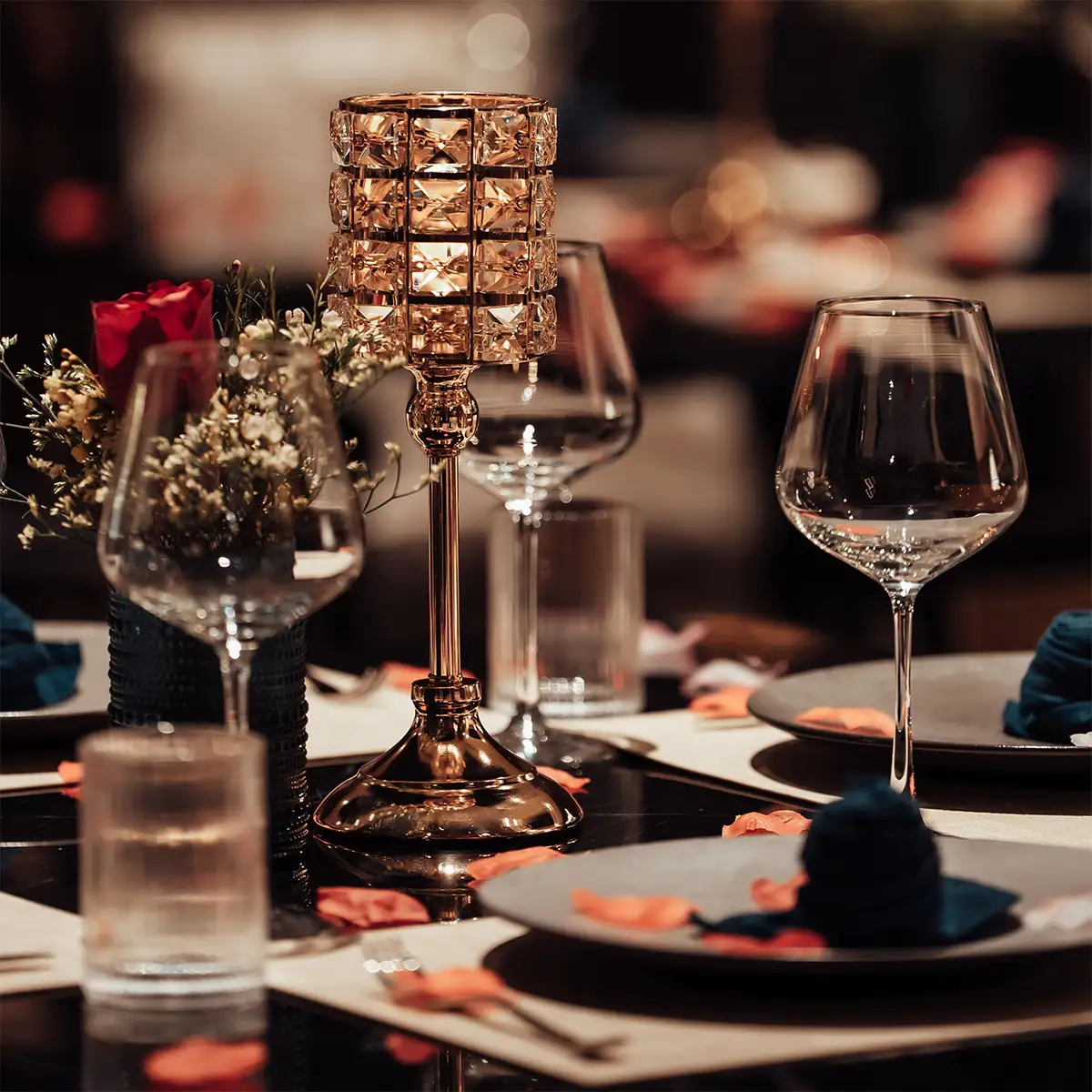- 1. The essence of japanese fine dining: A philosophy of artistry and respect
- 2. Core pillars of Japanese fine dining: Kaiseki and omakase
- 2.1. Kaiseki: The art of seasonal storytelling
- 2.2. Omakase: Trusting the chef's vision
- 3. Navigating the fine dining experience: Practicalities and etiquette
- 4. Beyond Kaiseki and Omakase: Other exquisite experiences
- 5. Top destinations for Japanese fine dining
- 6. Experiencing Japanese fine dining at Moca Dining
The allure of Japanese cuisine often begins with familiar comforts, but its true zenith is found in a world of profound artistry, tradition, and precision. To experience Japanese fine dining is to embark on a journey that transcends the plate, engaging all the senses in a meticulously orchestrated performance. It is a world where every ingredient tells a story, every technique is honed over generations, and every moment is guided by a deep philosophy of respect. This guide will serve as your introduction to the core concepts, cultural nuances, and essential etiquette of an unparalleled culinary tradition.
1. The essence of japanese fine dining: A philosophy of artistry and respect
Defining fine dining in Japan requires looking beyond mere luxury. It is, at its heart, a manifestation of a culinary philosophy centered on the relentless pursuit of perfection. This philosophy is built upon two foundational pillars: Shun and Omotenashi.
The concept of "Shun" (旬) is the celebration of seasonality. It is the deeply held belief that every ingredient—be it a fish, a vegetable, or a fruit—has a specific, fleeting moment of peak flavor and nutritional value. A true master chef builds their entire menu around this principle, sourcing ingredients at their absolute best. For example, the delicate sweetness of firefly squid (hotaru ika) signals the arrival of spring, while the rich, earthy fragrance of matsutake mushrooms is the defining taste of autumn. This dedication to seasonal ingredients ensures that every dish is a vibrant, honest expression of nature.
Complementing this is Omotenashi (おもてなし), the Japanese spirit of wholehearted hospitality. It is a service ethos that is both selfless and intuitive, focused on anticipating a guest's needs before they are even expressed. It is the quiet refilling of a glass, the detailed explanation of a dish's origin, and the creation of a serene atmosphere where the guest can feel completely at ease. This is not merely service; it is a sincere act of welcoming.
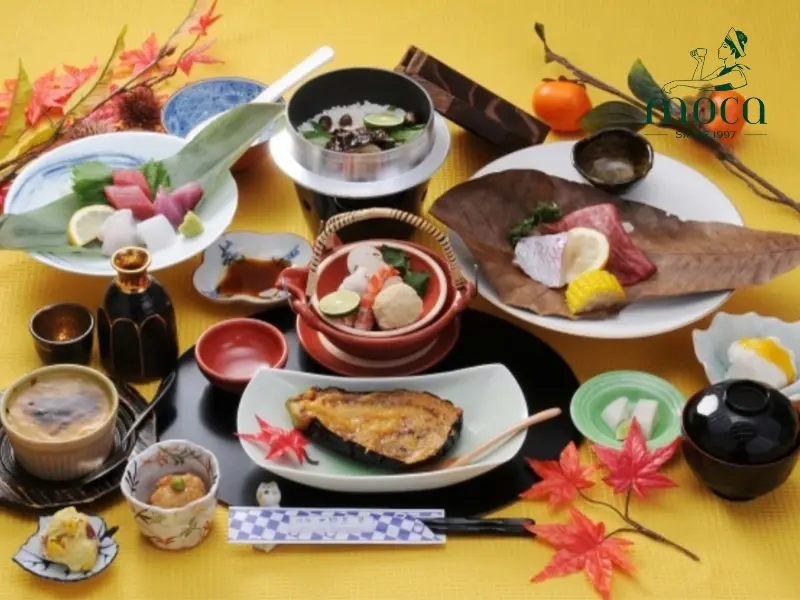
Japanese fine dining: where seasonality meets heartfelt hospitality in perfect harmony.
2. Core pillars of Japanese fine dining: Kaiseki and omakase
Two quintessential experiences define the landscape of high-end Japanese food: Kaiseki and Omakase.
2.1. Kaiseki: The art of seasonal storytelling
Originally a simple meal served during the traditional tea ceremony, Kaiseki has evolved into a magnificent multi-course culinary spectacle. It is a highly structured meal, typically comprising 8-12 courses, that tells a story of the current season through a progression of flavors, textures, and temperatures.
The structure of a Kaiseki meal is a masterclass in balance and harmony. It often includes:
- Sakizuke (先付): A small, elegant appetizer, similar to an amuse-bouche.
- Wanmono (椀物): A lidded bowl course, usually a clear, delicate soup that showcases the chef's dashi-making skill.
- Mukozuke (向付): A seasonal sashimi selection.
- Yakimono (焼物): A grilled course, often featuring a premium fish.
- Nimono (煮物): A simmered dish, where ingredients are gently cooked to absorb flavor.
- Gohan (御飯): A rice course, often served with miso soup and pickles (tsukemono).
- Mizumono (水物): A final dessert, typically a selection of perfect, seasonal fruit.
Presentation is paramount. The choice of dishware—from antique lacquer bowls to handcrafted ceramics—is as important as the food it holds, with each vessel chosen to complement the ingredients and enhance the seasonal theme. For instance, a spring Kaiseki might feature tender, young bamboo shoots (takenoko) in the simmered course, served in a fresh green bowl to evoke the new growth of the season. In Kyoto, the tradition of Kyo-Kaiseki is particularly renowned for its elegance and refinement, representing the pinnacle of this art form.
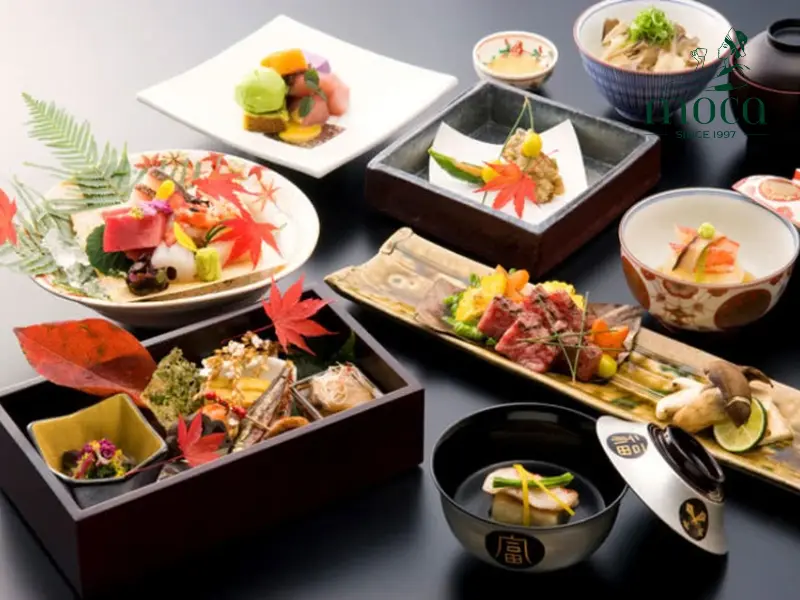
Kaiseki: a harmonious journey through the season, crafted with precision and grace.
2.2. Omakase: Trusting the chef's vision
The word "Omakase" (お任せ) translates to "I leave it up to you." It is an experience built on the ultimate trust between diner and chef. By choosing Omakase, the guest relinquishes control and places their meal entirely in the hands of the expert, allowing the chef to present the very best ingredients available that day.
This format fosters a unique and intimate chef-diner relationship, especially at a counter setting. The experience becomes a conversation. For example, during a sushi Omakase, the chef might place a glistening piece of otoro (fatty tuna) before you, explaining, "This tuna is from Oma, caught this morning. I have aged it for three days to deepen its umami flavor. Please enjoy it as is; I have already applied the perfect amount of nikiri soy."
This interaction transforms the meal from a transaction into a shared, educational journey. While most famously associated with sushi, Omakase experiences can also be found in high-end Tempura and Yakitori establishments, all celebrating the chef's craftsmanship and daily selections.
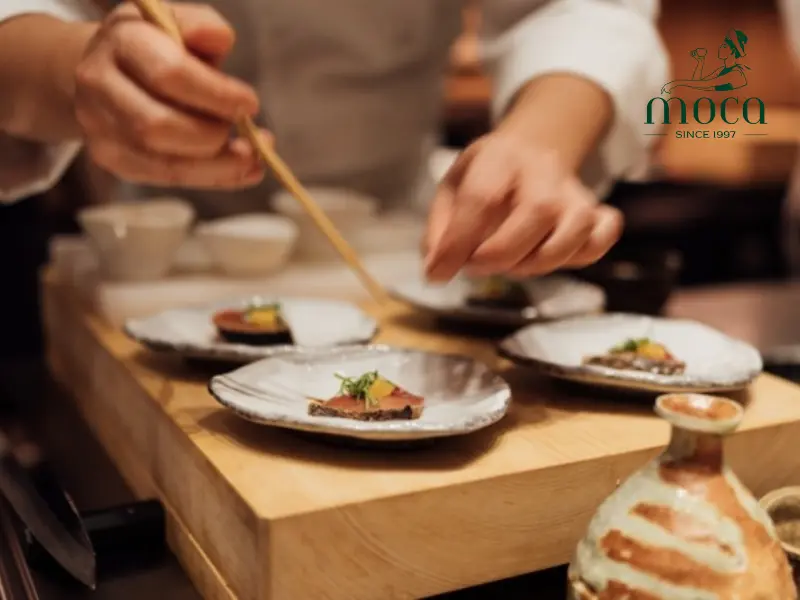
Omakase: surrendering to the chef’s mastery for an intimate culinary journey.
3. Navigating the fine dining experience: Practicalities and etiquette
To fully appreciate fine dining in Japan, understanding its customs is essential.
- Reservations: For Michelin-starred Japan establishments or other famous restaurants, booking months in advance is not just recommended; it is often mandatory. Reservations can sometimes be made through online platforms or hotel concierge services, which can be helpful if you do not speak Japanese. Be mindful that cancellation policies are typically very strict, reflecting the significant effort and cost the restaurant undertakes to source ingredients specifically for your visit.
- Dining etiquette and cultural nances
- Tipping: Tipping is not customary and can be considered impolite. The price of the meal is inclusive of the exceptional service.
- Seating: You may encounter traditional floor seating, known as "Zashiki." If this is uncomfortable, it is acceptable to inquire about Western-style tables when booking.
- Chopstick Etiquette: Never stick your chopsticks upright in a bowl of rice, as this resembles a funeral rite. Do not pass food from your chopsticks to another's. Rest them on the provided chopstick rest when not in use.
- Dress Code: The dress code is typically smart casual or formal. It is a sign of respect for the chef, the establishment, and the other diners.
- Payment and language: While credit cards are becoming more common, many smaller, high-end establishments still prefer cash. It is always wise to confirm payment methods in advance. English menus may not always be available, but in a true Japan fine dining setting, this is an opportunity to trust the chef and embrace the Omakase spirit.
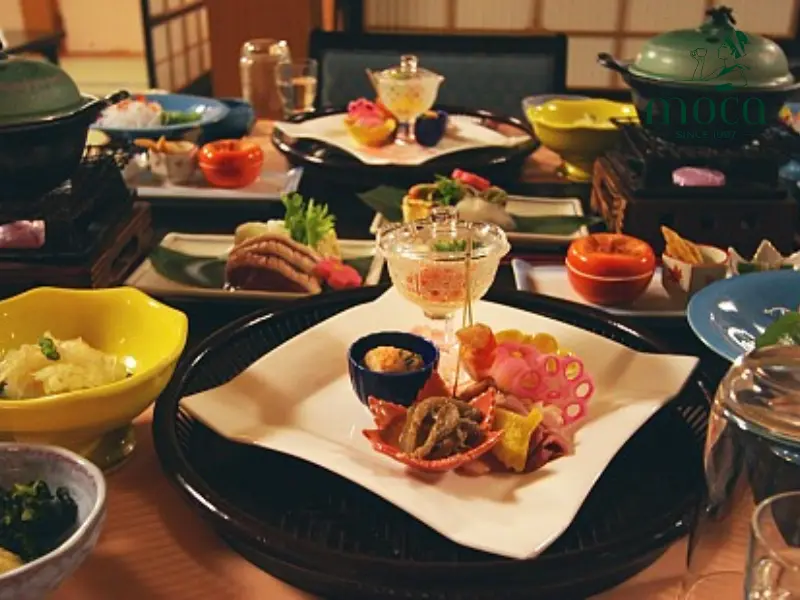
In Japanese fine dining, etiquette is an extension of respect—for the food, the chef, and the moment.
4. Beyond Kaiseki and Omakase: Other exquisite experiences
The world of Japanese fine dining is rich and diverse.
- High-End sushi and sashimi: Here, the focus is on the purity of ingredients. The quality of the vinegared rice (shari) and the fish (neta) is paramount, and the skill of the Itamae (sushi chef) is on full display.
- Wagyu and yakiniku: Japan is home to the world's most coveted beef. Experiencing A5-grade Wagyu from regions like Kobe or Matsusaka is unforgettable. In a high-end Yakiniku restaurant, you grill these premium cuts yourself at the table.
- Tempura: Far from a simple fried dish, master-level Tempura is incredibly light and delicate, encasing seasonal seafood and vegetables in a crisp, lacy batter.
- French/Italian with Japanese influence: Many world-class chefs in Japan are blending European techniques with superior local seasonal ingredients and the Japanese aesthetic, creating breathtaking fusion cuisine.
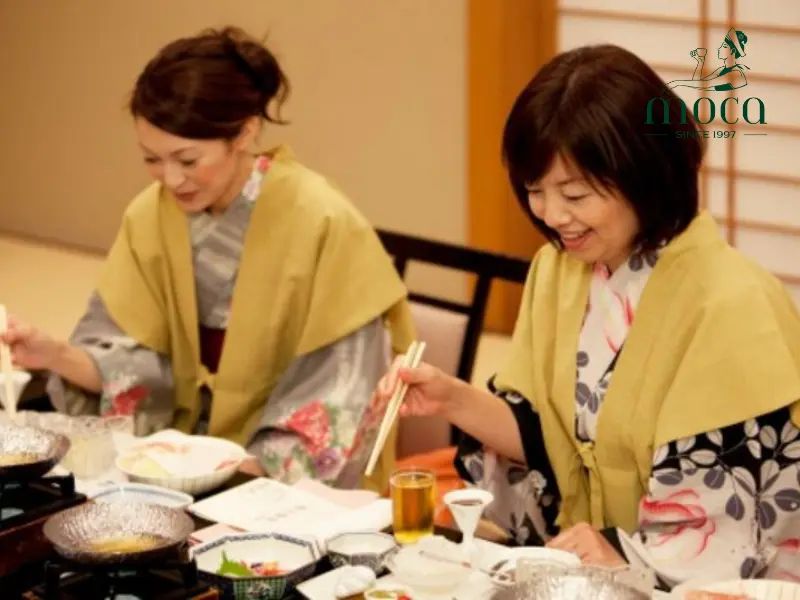
Beyond tradition—Japan’s fine dining explores purity, precision, and bold cross-cultural creativity.
5. Top destinations for Japanese fine dining
- Tokyo: As the city with the highest number of Michelin-starred restaurants in the world, Tokyo stands out as a premier destination for Japanese fine dining. Areas such as Ginza and Shinjuku boast an unparalleled concentration of world-class restaurants, offering exquisite and innovative culinary experiences that showcase the best of Japan’s gastronomy.
- Kyoto: Known as the historic and cultural heart of Japan, Kyoto is renowned for its traditional Japanese fine dining, particularly Kaiseki cuisine—a multi-course, artfully presented meal that reflects the seasons. Kyoto is also famous for shojin ryori, a refined Buddhist vegetarian cuisine that embodies the city’s spiritual heritage.
- Osaka: Often referred to as "Japan’s Kitchen," Osaka is a vibrant culinary hotspot offering a diverse range of Japanese fine dining options. The city’s dynamic food scene combines high-quality ingredients with creative cooking techniques, making it a must-visit for those seeking authentic and memorable dining experiences.
For those looking to indulge in top-tier Kaiseki or Omakase dining experiences in these cities, the typical price range is approximately $150 to $400 USD per person. However, prices can be significantly higher at the most exclusive and renowned establishments, reflecting the exceptional quality and artistry of Japanese fine dining.
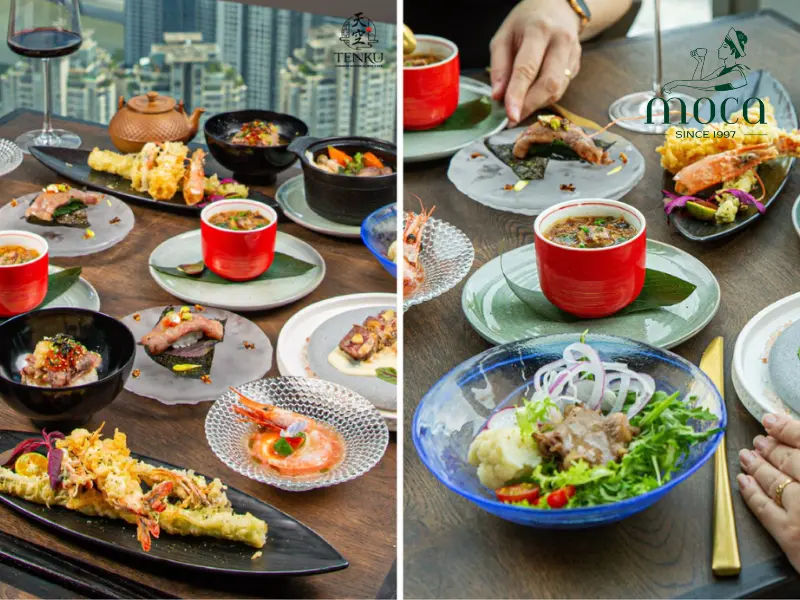
From Tokyo’s innovation to Kyoto’s refinement and Osaka’s bold flavors—Japan’s fine dining is a journey through its culinary soul.
6. Experiencing Japanese fine dining at Moca Dining
At Moca Dining, we are deeply committed to these revered principles. Our philosophy is a direct reflection of the Japanese culinary philosophy, where every detail is considered. We embrace Shun, sourcing our ingredients daily to ensure every dish we serve represents the peak of the season. Our service is guided by the spirit of Omotenashi, creating an atmosphere of warmth and sophisticated tranquility for our esteemed guests.
We source the highest grade of Wagyu, prized for its intense marbling and melt-in-your-mouth texture. The beef is seared to perfection, and rather than using a heavy sauce, it is accompanied only by house-smoked soy sauce and freshly grated wasabi root to accentuate, not mask, its sublime flavor. This dish is a testament to our belief in pure, perfect ingredients, a core tenet of Japan fine dining.
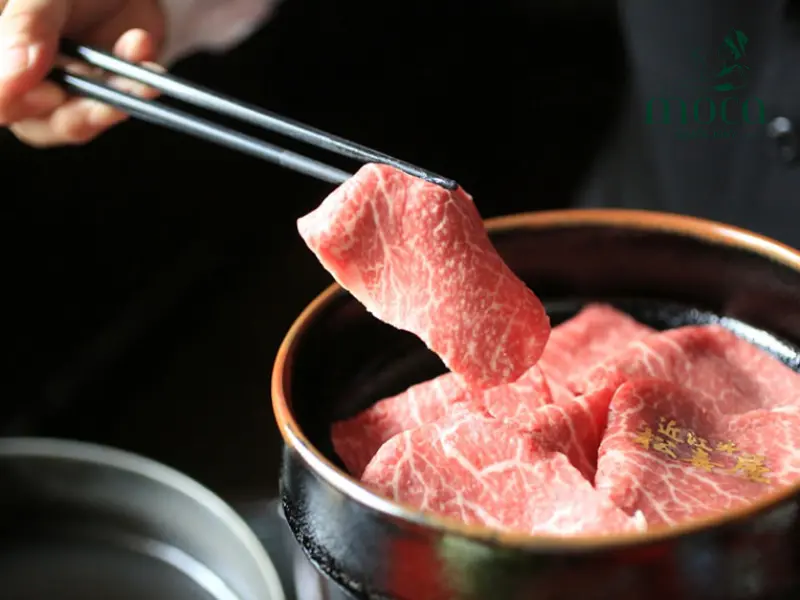
At Moca Dining, seasonality and sincerity meet on every plate—Wagyu at its purest expression.
Ultimately, Japanese fine dining is more than just a meal; it is a profound cultural and sensory immersion. It stands as a testament to immense dedication to craftsmanship, deep reverence for seasonality, and the selfless spirit of hospitality that define this culinary art form. It is an experience that stays with you long after the final course is cleared. We encourage you to embark on your own culinary journey. Discover the exquisite taste and profound philosophy of this tradition with us.
We warmly invite you to experience this exceptional art of Japanese cuisine at Moca Dining — where passion meets precision to create unforgettable moments. Reserve your table today and let us guide you through a memorable celebration of flavor and culture.






